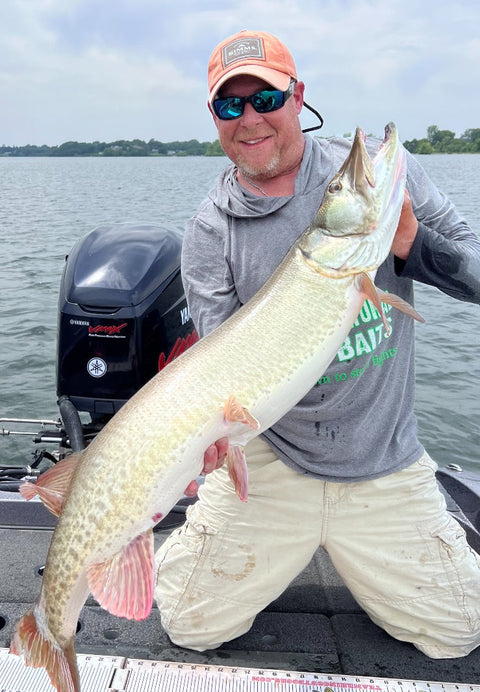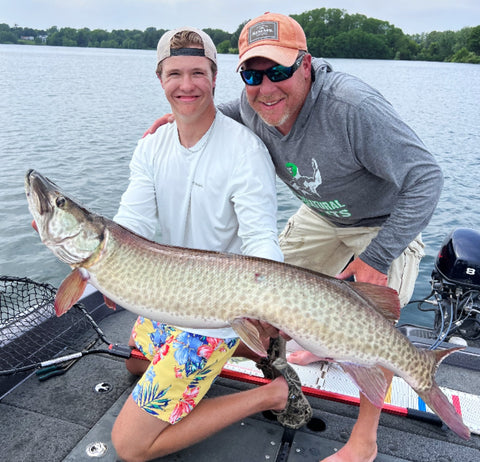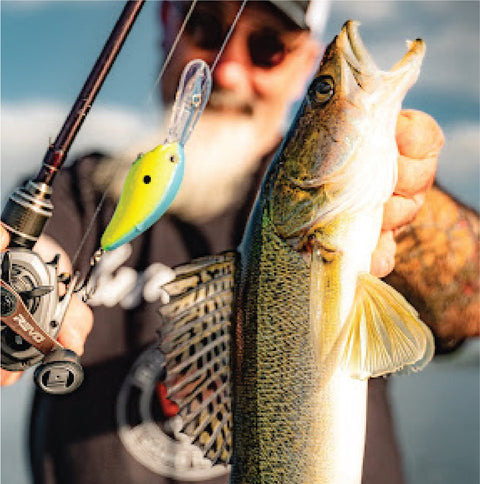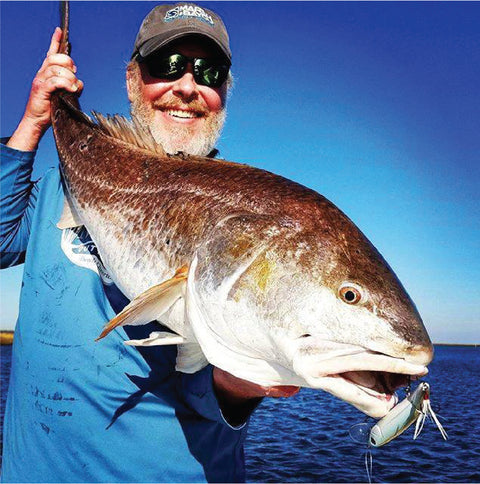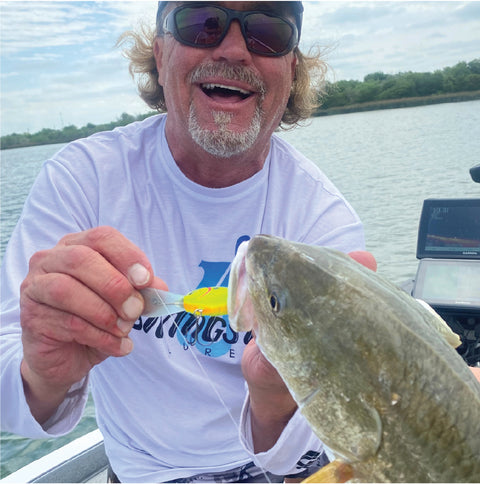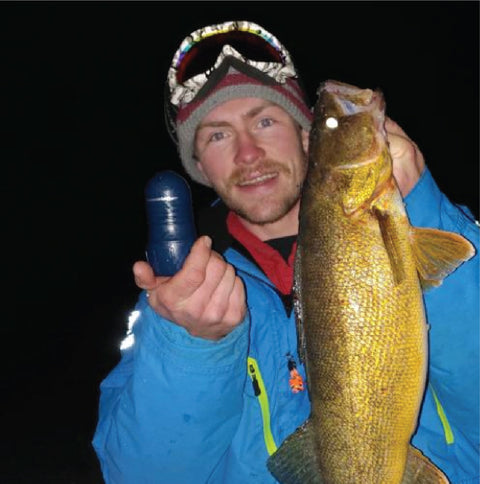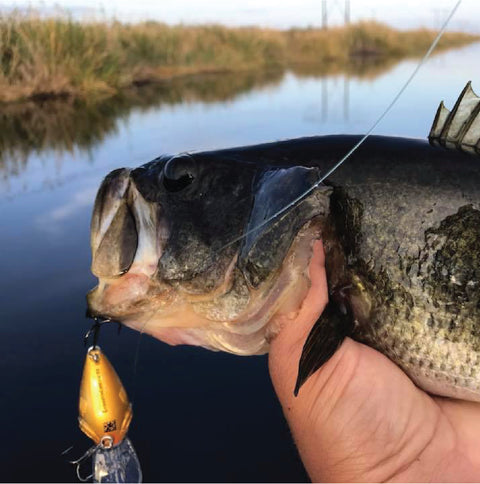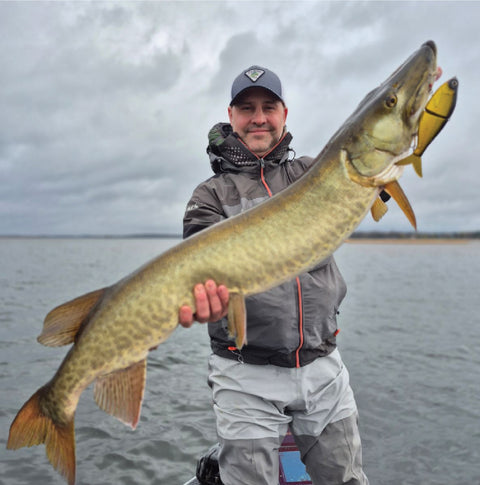How to Catch Tiger Muskie

Tiger muskies are elusive hybrids—a cross between a true muskie and a northern pike—that follow their own unique set of rules. While some muskie tactics and certain pike strategies will work, truly dialing in tiger muskie fishing requires a careful blend of both approaches.
The same goes for lures. Muskie lures are designed with pure muskies in mind. Pike lures cater to pike. But tiger muskies? They demand a mix of both—something that combines the size, flash, and action of muskie baits with the speed and versatility often found in pike gear. Below is a list of the best tiger muskie lures you should use if you are serious about getting started or mastering tiger muskie fishing.
Where to Find Tiger Muskie
When targeting tiger muskies, focus your efforts on key ambush zones—areas where they can hide, observe, and strike with minimal effort. Prime locations include weed edges, submerged points, breaklines, and humps. Tiger muskies often relate to structure in a way that's more pike-like than muskie, favoring shallower cover, especially in low-light conditions or cooler water. During midday or high-pressure periods, they may slide off into deeper adjacent drop-offs or suspend near submerged timber or other subsurface cover available to them. Pay close attention to wind-blown banks, current seams in reservoirs, and any transition zones between hard and soft bottom—tiger muskies use these subtle shifts to set up ambushes.

Types of Cover Used by Tiger Muskies
1. Vegetation
-
Cabbage: A perfect ambush location for tiger muskies, as the broad bloom of this vegetation provides ample places to hide.
-
Milfoil: Typically denser than cabbage, milfoil creates thick vertical cover. Focus on the edges to engage tiger muskies lurking along its outer perimeter.
-
Lily Pads: Excellent overhead cover, especially in summer. They reduce light penetration and allow tiger muskies to ambush in shallow zones.
2. Wood
-
Fallen Trees (Laydowns): Provide shade and structure along shorelines for baitfish, drawing in tiger muskies who use them as ambush points. Focus on the outside edges, where tiger muskies often intercept baitfish moving in and out.
-
Stumps: Offer prime ambush locations for shallow-oriented tiger muskies.
-
Standing Timber: Especially effective in flooded reservoirs, this vertical cover is valuable in colder water scenarios as tiger muskies use it to target schooling crappie and other baitfish.
3. Rock
-
Riprap: Man-made rock banks retain heat and draw baitfish. These areas become prime tiger muskie targets in colder months or during tough conditions like cold fronts.
-
Boulders: Create hard-bottom transitions and ambush zones, as well as a thermal advantage. Unlike seasonal vegetation, boulders provide reliable, year-round cover, making them consistent tiger muskie habitat.
What Lures to Use for Tiger Muskie Fishing: Best Tiger Muskie Baits
-
Magnus
The Magnus is a versatile swimbait with a wide, powerful thump that mimics big forage like suckers, shad, or stocked trout—perfect for drawing out tiger muskies in clear or pressured waters. Its lifelike profile helps seal the deal when tigers are following but hesitant.
-
Dirty Dancer
Designed specifically for tiger muskies, they simply can’t resist this crankbait. Ideal for working along weed edges, timber, or suspended structure, it’s deadly during all conditions. Work it with a simple straight retrieve and let the Dirty Dancer do the work.
-
Titan
The Titan is a dive-and-rise lure that’s easy to work with big action. The Titan triggers tiger muskies that are hunting in shallow cover or cruising transition zones, especially in clear water or on tough days where visual appeal matters.
-
Big Makk
The best topwater prop bait for tiger muskies. The Big Makk excels in shallow water or low-light windows when tiger muskies are feeding high in the column. The noise, splash, and EBS sound make it a topwater menace, especially over cabbage flats or sandy bays.
-
Bad Boy Bucktail
A high-thump, fast-retrieve bucktail that shines in warmer temps and active feeding periods. It’s a classic-style bait with modern upgrades, ideal for covering water and triggering reaction strikes from tiger muskies roaming weedlines and points.
-
Kraken
A hybrid tube bait with an oversized profile and erratic fall—perfect for pitching into isolated cover like stumps, laydowns, or pockets in weed beds. The Kraken gives tiger muskies a big, meaty target they can’t ignore, especially when they’re holding tight to structure.
Find Tiger Muskies: Their Preferred Water Temperature
Tiger muskies are more temperature-tolerant than pure-strain muskies and often behave more like northern pike when it comes to adapting to warmer water. They can remain active across a broad range of temperatures, typically from the low 50s up into the mid-70s Fahrenheit. While they can survive in even warmer conditions, their peak feeding windows generally fall in the mid-60s. When surface temperatures climb into the high 70s, tiger muskies often slide back to deeper edges or suspend off structure to feed more comfortably.
Active tiger muskies will still push shallow when water temps are between 50 and 80 degrees—but remember, “shallow” doesn’t always mean shoreline. It can also mean shallow in the water column, even out over deep, open water. If you're serious about dialing in tiger muskie patterns, don’t overlook trolling as a key tool. It allows you to explore both depth and range efficiently, making it easier to find where these hybrid predators are staging and feeding.

Trolling for Tiger Muskies: The Basics
Trolling is one of the most efficient ways to cover water and locate active tiger muskies, especially on larger reservoirs and natural lakes when the shallow casting bite isn’t paying off. The key is to establish a controlled presentation that keeps your baits running in the strike zone—typically just above weed tops, along breaklines, or suspended off points and humps. Tiger muskies are notorious for following baits before striking, so long trolling passes allow you to tempt them into committing. Boat speed, lure depth, and precise placement all matter, but the goal is simple: present a believable meal at the right place and time.
To increase the amount of water you're covering, Livingston Lures Blade Planer Boards are a game-changer. These boards allow you to run multiple baits out to the side of the boat, letting you cover a wider swath of water during your trolling pass. They excel in situations where tiger muskies are suspended or roaming flats and open water. Pair boards with lures like the Squeaky Pete or the Magnus to reach depth and show off big profiles. Whether you're working contour lines or running a zig-zag pattern across open basins, planer boards help you stay stealthy, efficient, and in the strike zone longer—critical when chasing a predator as unpredictable as the tiger muskie.

Tiger muskies in open water will often be just off structural edges. Focus your efforts on the open water adjacent to points or major breaklines. Areas like subsurface humps need to be hit multiple times, as tiger muskies will be holding in these deeper refuges and may need to be coaxed into a reaction strike from your trolling spread.
Tiger Muskie Trolling Speed
Use water temperature as your initial guide. In colder water—say in the 50s—you should run anywhere from 2 mph to 3 mph. In warmer water in the 70s, starting at 3.5 mph and going all the way to 5 mph at maximum is a good rule of thumb. Trolling speeds for tiger muskies must be dialed in each time you're on the water; pay attention to baitfish location and play with varying speeds until you get a strike.
Tiger Muskie Handling and Conservation
When handling tiger muskies, always keep them wet and support their body fully to minimize stress and injury. Use a landing net with rubberized mesh and avoid touching their gill plates or eyes. Handle the fish gently and keep it in the water as much as possible during release. Quick, careful release helps ensure the tiger muskie’s survival and protects this prized sport fish.
Cheers,
Tiger Muskie Fishing: States with Tiger Muskie Stocking Programs
Washington Tiger Muskie Fishing: Where to Find Tiger Muskie
Washington has several lakes where tiger muskies have been stocked to control northern pikeminnow populations. Tiger muskies thrive in the clear, cool waters of Washington.
-
Mayfield Lake: Tiger muskies were introduced in 1993 to help control northern pikeminnow populations. The lake is known for its sizable tiger muskie population.
-
Lake Merwin: Situated in Clark County, this lake has been stocked with tiger muskies to manage invasive species and offer anglers a challenging fishing experience.
-
Curlew Lake: Found in Ferry County, this lake has produced notable tiger muskies, including a state-record fish weighing 37 pounds, 14 ounces.
-
Evergreen Lake: Located in Grant County, this lake is among the waters where tiger muskies have been introduced.
-
Lake Tapps: Situated in Pierce County, this lake has been stocked with tiger muskies to enhance fishing opportunities.
-
Newman Lake: Found in Spokane County, this lake is among the waters where tiger muskies have been introduced.
-
Silver Lake: Located in Spokane County, this lake has been stocked with tiger muskies to provide anglers with unique fishing opportunities.
Idaho Tiger Muskie Fishing: Where to Fish for Tiger Muskie
Idaho utilizes tiger muskies as a biological control method for invasive species and to provide anglers with unique fishing experiences.
-
Lake Lowell: Situated in Canyon County, this lake has been stocked with tiger muskies to control populations of carp and suckers.
-
Black Canyon Reservoir: Located in Payette County, this reservoir has been stocked with tiger muskies to manage undesirable fish species.
-
Little Payette Lake: Found in Valley County, this lake has produced notable tiger muskies, including a state-record fish weighing over 44 pounds.
-
Winchester Lake: Situated in Lewis County, this lake is among the waters where tiger muskies have been introduced.
-
Hauser Lake: Located in Kootenai County, this lake has been stocked with tiger muskies to provide anglers with unique fishing opportunities.
-
Shepherd Lake: Found in Bonner County, this lake is among the waters where tiger muskies have been introduced.
-
Merriam Lake: Located in Custer County, this high-elevation lake was stocked with tiger muskies to control brook trout populations. However, harsh winter conditions led to the failure of this stocking effort.
Colorado Tiger Muskie Fishing: Where to Fish for Tiger Muskie
Colorado stocks tiger muskies to manage invasive species and provide anglers with trophy fishing opportunities.
-
Pikeview Reservoir: Situated in El Paso County, this reservoir has been stocked with tiger muskies to control populations of undesirable fish species.
-
Shadow Mountain Reservoir: Located in Grand County, this reservoir was stocked with 13,500 tiger muskies to enhance fishing opportunities.
-
Gross Reservoir: Found in Boulder County, this reservoir has been stocked with tiger muskies to manage undesirable species and provide a trophy-sized fishery.
New Mexico Tiger Muskie Fishing
New Mexico has stocked tiger muskies to control populations of invasive species and provide anglers with unique fishing opportunities.
-
Bluewater Lake: Located in Cibola County, this lake has been stocked with tiger muskies to control populations of goldfish and white suckers. The lake has produced tiger muskies over 50 inches and 38 pounds.
-
Quemado Lake: Found in Catron County, this lake has been stocked with tiger muskies to manage populations of undesirable fish species.


